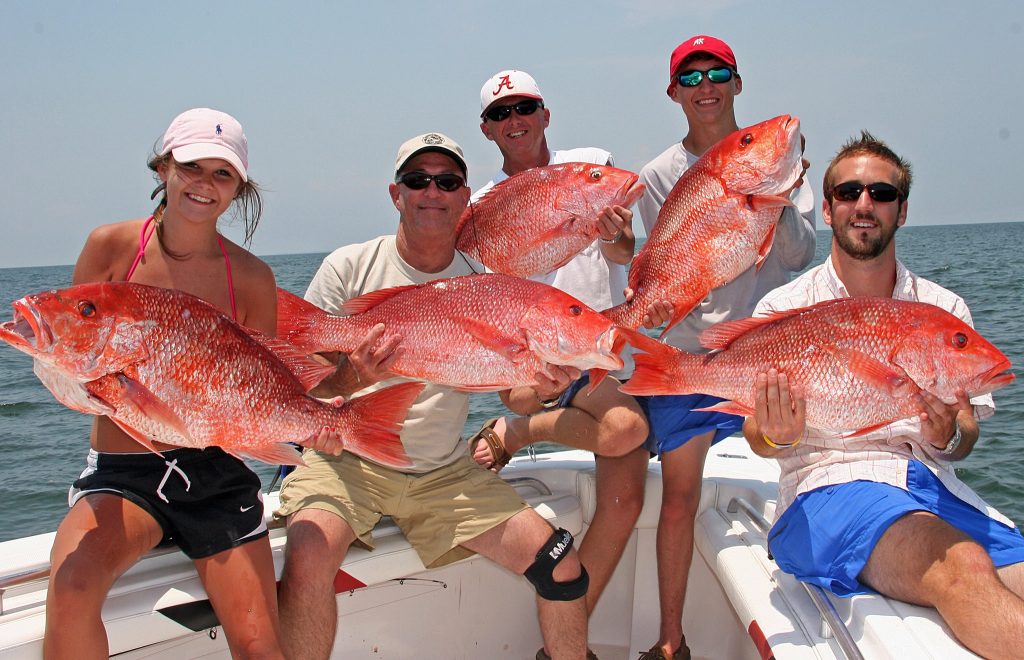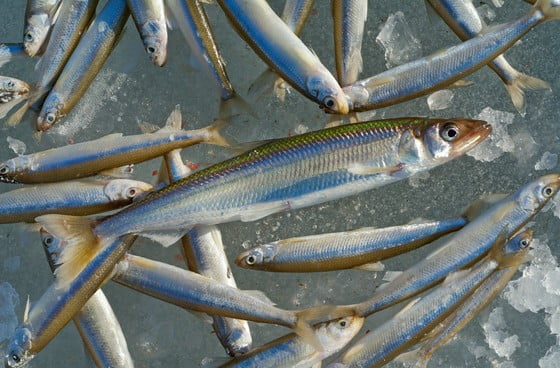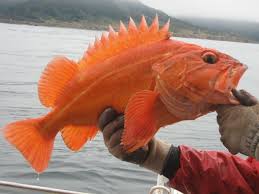
By DAVID RAINER
Alabama Department of Conservation and Natural Resources
The Alabama Snapper Season Opener Shows Pent-Up Demand from a variety of reasons, including the COVID-19 restrictions, placed the May 22 opening day of snapper season in record territory.
While the second weekend of the private recreational red snapper season in Alabama saw near perfect conditions, the opening weekend proved why state management of the red snapper is so important to ensure maximum access to this treasured fishery.
“On opening day, that was the most people I’ve ever seen on a Friday,” said Alabama Marine Resources Director Scott Bannon. “Even though the weather was a little rougher, the harvest was almost the same as the 2018 numbers. People were just glad to have the opportunity to get out. They were tired of being at home. They felt this was a safe and enjoyable outdoor activity. And we agree.”
“When I got to Dauphin Island at 8 o’clock on opening day, the trailers parked alongside the road were already backed up 7/10ths of a mile from the ramp (Billy Goat Hole). Saturday was another busy day. With the winds picking up Sunday and Monday, the activity was down a good bit.”
The 2018 and 2019 seasons were conducted under an EFP (exempted fishing permit) to allow state management and significantly increased the number of days private recreational anglers were allowed to catch red snapper over recent years.

With the approval of regional management beginning in 2020 for the five states on the Gulf of Mexico, each state sets its season, bag and size limits under certain parameters.
Because Alabama closely monitors the red snapper harvest through its Red Snapper Reporting System, Snapper Check, Marine Resources can adjust the seasons to allow anglers to catch as many fish as possible while staying within the state’s quota.
Alabama’s private recreational season is set to run each Friday through Monday with a closing date tentatively set for July 19. The closing date may be adjusted to ensure the state’s quota of 1,122,662 pounds is met but not exceeded. Snapper Check numbers indicated 176,782 pounds of red snapper were harvested opening weekend.
Bannon and Chris Blankenship, the Commissioner of the Alabama Department of Conservation and Natural Resources, ventured out on opening weekend with old friends Brian and Daniel Rowe and crew and came back with a box full of red snapper.
“I had some concerns that the seas were going to be a little choppy,” Bannon said. “We had been talking to some boats that were struggling, so they stayed close and came back pretty early.
“In the afternoon, the wind died down. The bite was not hard and fast, but we caught big fish. We only caught a few undersized fish that had to go back. We caught everything from just over legal (16 inches total length) to a few just over 20 pounds. It was a real good trip.”
From a management perspective, Bannon said that’s what marine scientists like to see on a reef, a variety of sizes of snapper. He also said some of the relatively small reefs held good-sized fish.
On opening day, Bannon said the anglers used a variety of baits to target the red snapper and definitely saw a preference.
“They seemed to like the whole pogeys (menhaden) better than cigar minnows on that day,” he said. “People caught a lot of big fish that opening weekend, which generally happens in a season. People reported catching legal-size fish relatively quick. They didn’t have to throw many undersized fish back.”
By the time the seas got rough on that opening weekend, Bannon could see how the state management of the season was paying dividends.
“That Monday of opening weekend, we only had a handful of reports through Snapper Check,” he said. “I think that was honest. People really paid attention to the weather and didn’t put themselves in harm’s way. People now realize it’s about the pounds caught and there will be more opportunities to catch snapper later. Of course, that all goes back to the reporting through Snapper Check and getting accurate numbers.”
One thing Bannon did on that opening Friday was to check to see if anglers had the Snapper Check app loaded on their smartphones.
“I, along with other Division employees, helped the ones that didn’t have it get the app loaded on their phones,” he said.
Bannon also discovered that many people are still unaware of the Reef Fish Endorsement that went into effect for the 2020 season. Anglers who catch any fish that are considered a reef fish species are required to purchase the $10 endorsement.
Visit www.outdooralabama.com/saltwater-fishing/saltwater-reef-fish-endorsement for a list of fish species the endorsement covers.
“Nobody seemed overly concerned the endorsement was in place, but they were unaware they needed it,” Bannon said. “Some people purchased it on the Outdoor Alabama app while they were launching the boat.”
The reef fish endorsement provides a source of funding to continue to maintain the research and monitoring for populations in Alabama’s artificial reef zones that is required to continue state management of the red snapper fishery.
“We had been using federal funds,” Bannon said. “We needed a source of funds to continue that work. Also, other than Snapper Check, we didn’t have way to determine how many people are participating in the reef fish fishery. The endorsement helps us to determine the effort.”
Bannon pointed out that if you’re fishing for saltwater species on the Causeway and you don’t catch reef fish, you don’t need to purchase the Reef Fish Endorsement.
“But if you’re participating in the fishery offshore, these funds help us pay for Snapper Check and the monitoring through Dauphin Island Sea Lab and the University of South Alabama,” he said. “Now that we do have state management, we are obligated to manage the fishery to the best of our ability. The endorsement helps provide funds to do that.”
Because the reef fishing endorsement is new, Bannon said Marine Resources Enforcement will issue warnings right now. On opening weekend, 11 warnings were issued for no reef endorsements.
“Our Enforcement staff wrote 12 citations for not reporting their snapper harvests,” he said. “We only had one over-the-limit case. We had no undersized fish citations and only one over-the-limit of all the people that were checked on opening weekend. I consider that a successful weekend. And people used good judgement for the smaller boats to not go on Sunday and Monday.
“I am a little concerned that our (Snapper Check) reporting is down just a little bit. That is the driving force of our management goal to give people the most opportunities to catch red snapper.”
Meanwhile, the charter-for-hire season opened Monday for a straight 62-day run through August 1, 2020. The charter boat section is still under federal management.
“A couple of different charter captains I’ve spoken with said bookings are up,” Bannon said.
Bannon is excited that it appears the red snapper season will be successful now that restrictions on Alabama’s beaches have been lifted.
“Alabama is definitely a fishing destination,” he said. “I’ve talked to folks who used to go to Destin to go fishing until they discovered Alabama. Now they make plans to go charter fishing in Alabama.”

